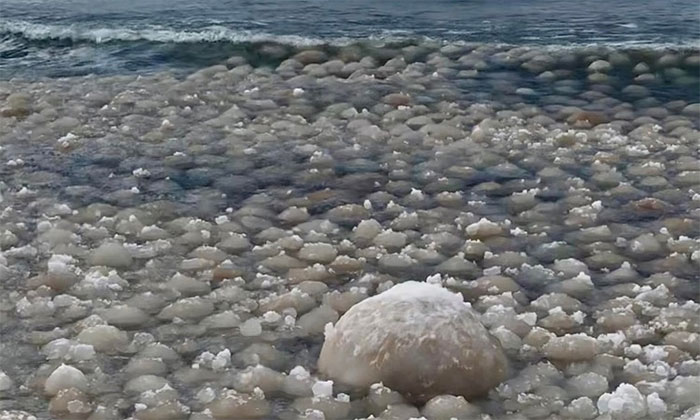Giant Ice Balls Appear Along Lake Michigan Shoreline, Some Measuring Over 90 cm in Width.
Ice balls at Lake Michigan. (Video: Hal Sorstokke)
Hal Sorstokke, a local resident, shared photos and videos of the ice balls on Facebook on January 24. According to Sorstokke, there are thousands of ice balls with diameters ranging from 20 to 30 cm. Many of these ice balls resemble oversized pearls rolling along the lakeshore.
Sorstokke, who lives about 11 km from Esch Road Beach in Benzie County, noted that ice balls appear almost every year. However, ice balls larger than 90 cm are quite rare. Previously, Sorstokke had only seen smaller ice formations.
Resident Timothy Fitzgerald Young also shared images of the ice balls on Facebook on January 25. This is a well-known phenomenon in Michigan. They form when cold air affects the water near the lake’s edge.
The Upmatters weather channel reported that the late arrival of winter this year has delayed the formation of ice balls. Michigan has experienced much warmer weather this winter compared to the annual average. Over the past three months, temperatures have not dropped below 0 degrees Celsius, resulting in very little ice along the lakeshore.

Ice balls form when ice accumulates on the water’s surface.
Water freezes at 0 degrees Celsius. In recent weeks, temperatures have dropped significantly in Michigan. This week, temperatures could reach as low as -6 degrees Celsius. Ice balls form when ice accumulates on the water’s surface. As the water moves, the ice rolls with the waves and sticks together, forming a spherical shape. Sorstokke emphasized that anyone wanting to check out the ice balls should be extremely careful, as the ice on the lake is very soft.
In February 2020, thousands of ice balls washed up along the shores of Lake Michigan. Similar phenomena have also been recorded in various other locations around the world, including Russia, Germany, and Finland. Michigan is one of the five lakes in the Great Lakes system in North America. It is the second largest lake by volume and the third largest by surface area.


















































